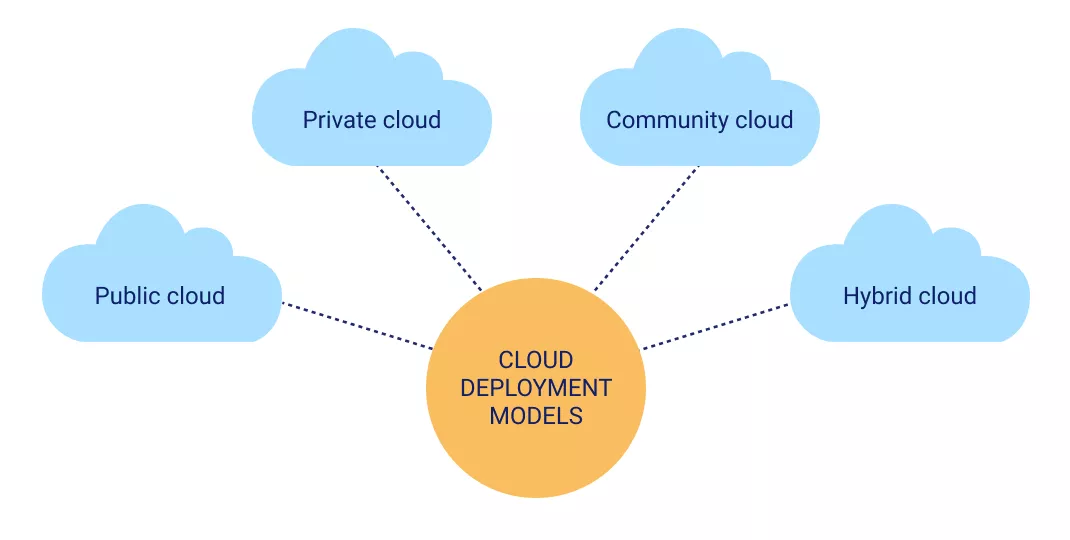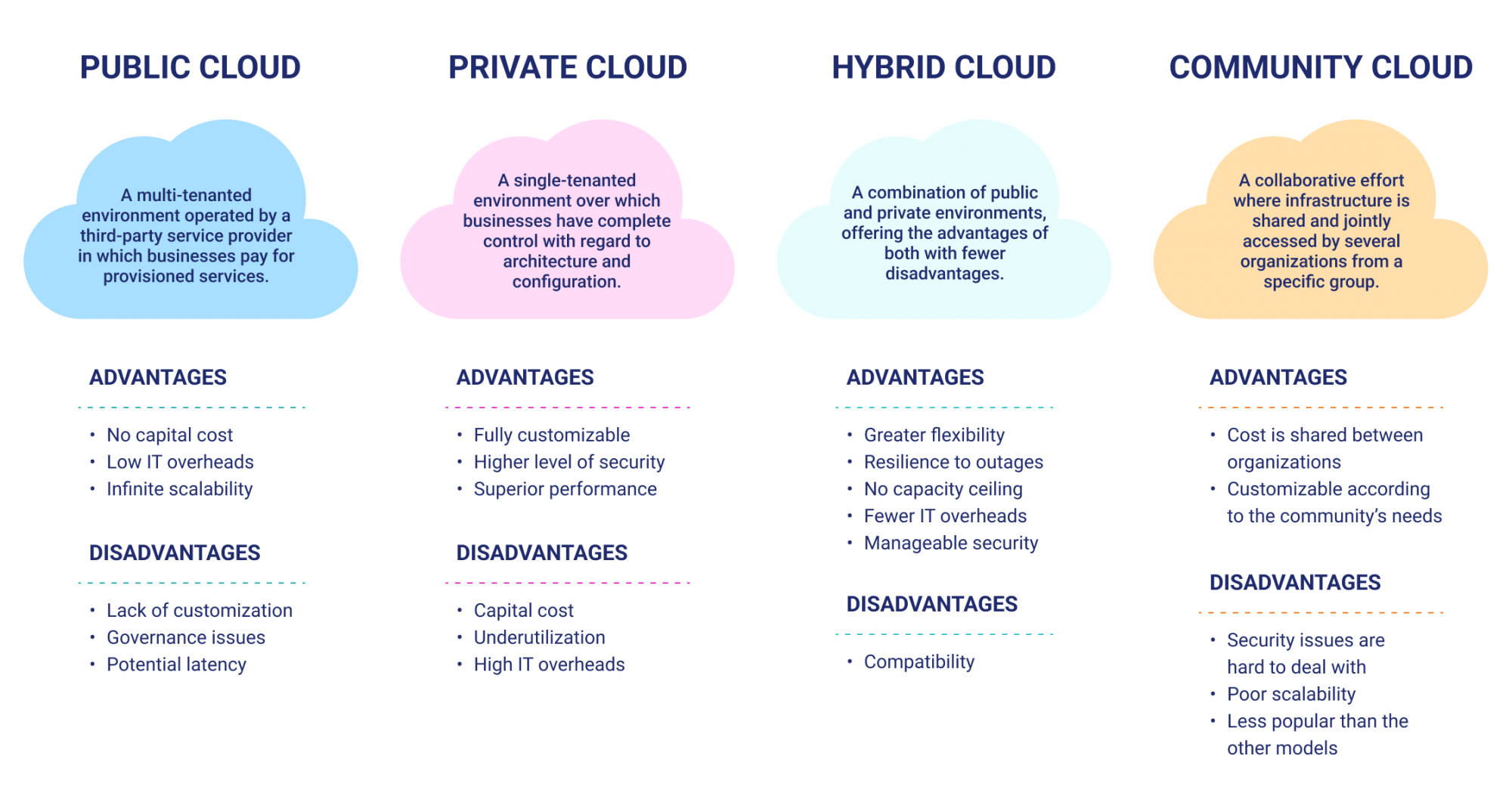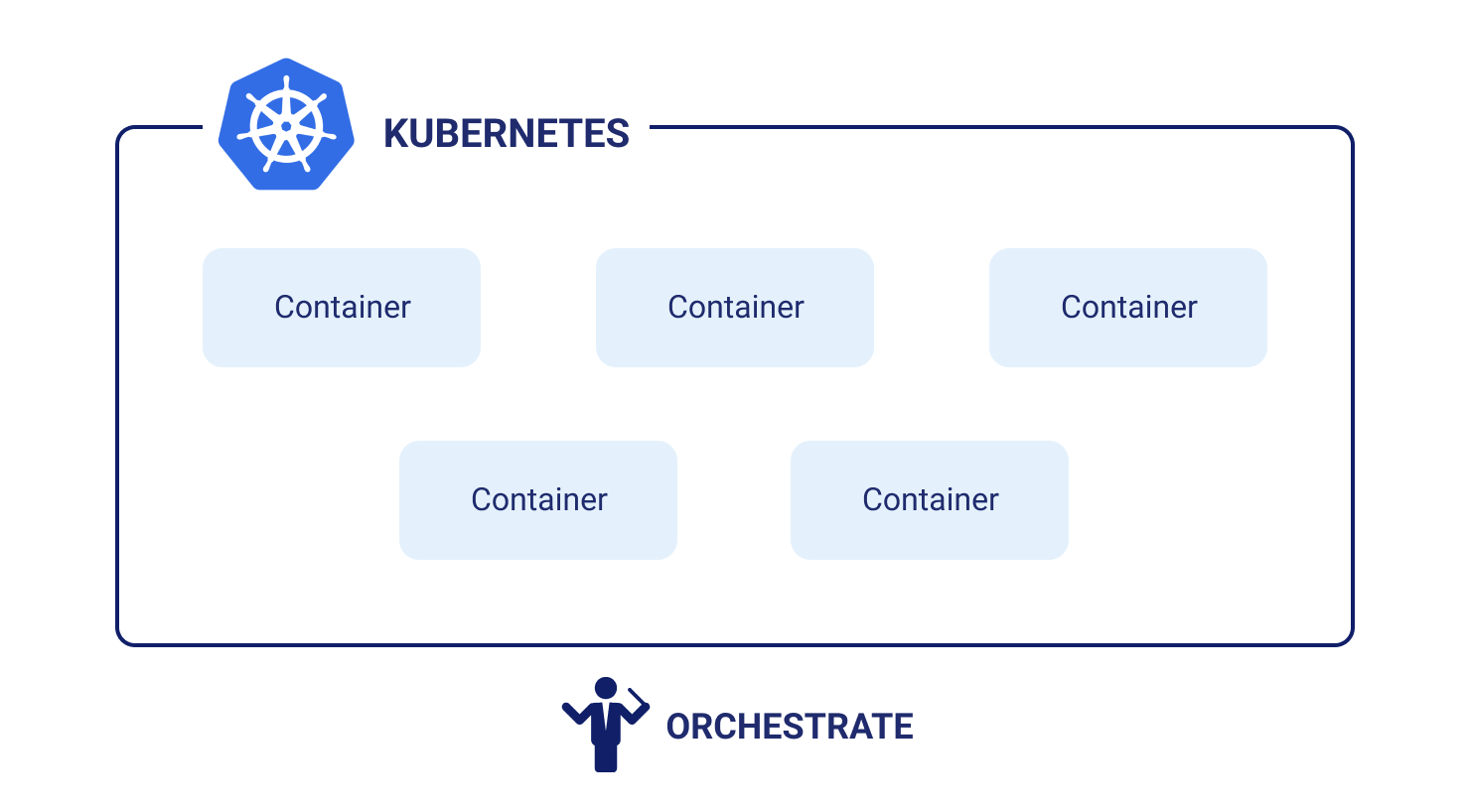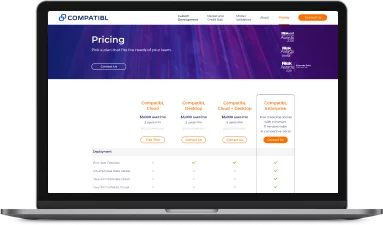When it comes to deploying applications, the cloud can be a confusing place. Every cloud provider is touting their unique benefits, making it hard to choose which one is truly best for you.
In the early stages of cloud computing, there were only two cloud deployment models—public and private. We now have many more options to choose from.
But the choice can be overwhelming—after all, it is your business’ growing needs that will serve as the ultimate source of inspiration for selecting a provider and deployment model. But what is a deployment model in cloud computing and how do you choose one?
Do you feel intimidated by the myriad of models? Fortunately, CompatibL’s overview brings together the main features of cloud deployment models to help you select which model is right for your company, starting today.
An Overview of Cloud Deployment Models
Microsoft gives quite a simple but complete definition of cloud computing:
“Cloud computing is the delivery of computing services—including servers, storage, databases, networking, software, analytics, and intelligence—over the internet (“the cloud”) to offer faster innovation, flexible resources, and economies of scale. You typically pay only for cloud services you use, helping you lower your operating costs, run your infrastructure more efficiently, and scale as your business needs change.”
Cloud computing is also sometimes used as a synonym for on-demand computing, software as a service (SaaS), and grid computing, where “cloud” means a data center.
There are many other definitions of cloud computing, but one thing is for certain: it is a service that includes different cloud deployment models, with all their pros and cons.
According to NIST, there are four types of cloud deployment models:
- Public cloud
- Private cloud
- Hybrid cloud
- Community cloud

A cloud deployment model is characterized both by the location of the deployment infrastructure and by the type of party that has control over it and the configuration of its parameters, such as the amount of storage and accessibility. The different deployment models are defined as follows.
- Public cloud: a cloud that is publicly available, with data stored on third-party servers. The pros of this type of cloud computing are cost effectiveness, easy access, scalability, and simple setup and use; and the cons are security issues, the lack of an individual approach to customers, and compromised reliability.
- Private cloud: a cloud that is accessible privately. From a technical point of view, public and private clouds are similar, with the only difference being that a private cloud is owned by a company. The benefits of cloud computing in private clouds include an individual approach to customers, greater control over confidential corporate information, and better security and reliability. The major disadvantage is, of course, the price.
- Hybrid cloud: this offers a mix of public and private cloud infrastructures and features, encompassing the best elements of both cloud deployment models. The befits comprise improved security and reliability, enhanced scalability, and a reasonable price. The disadvantage is that this model only makes sense if a company can split its data and store it in different clouds.
- Community cloud: this type of cloud offers computing resources that are shared with other firms and organizations, often with a limited set of users. The model thus resembles a private cloud. The benefits here include shared costs, which reduces the price, and improved compliance. However, the major disadvantage of community cloud computing is the cost for individuals or small companies, as this is higher than for public clouds.
So, how to decide on the best cloud deployment model? This can be a major challenge! The prerequisite for success is to carefully consider the pros and cons of the different cloud computing models.
Choosing Between Public, Private, Hybrid, and Community Clouds
Banks and financial organizations have specific needs for storage and computing power: storage that will be available 24/7, even when their offices are not; computing power to run their databases, websites, and internal trading and risk systems that make them money. What type of cloud should they use in this case?

Source: VMware, Cisco, Parallels
In our experience, costs may be lower with public clouds, as there are no capital expenditures for the end user. On the other hand, while private clouds do involve capital expenditures, these are still cheaper than owning and maintaining an on-premises infrastructure.
However, the model choice really depends on appropriate use cases. We have seen organizations do “lift and shift,” where they throw existing servers into the cloud and treat it like another datacenter. We strongly advice against such actions, as running those huge virtual machines 24/7 can get expensive. Instead, to mitigate risk architecture issues, we recommend you invest in an efficient cloud-native infrastructure, which will save you both time and money in the long run.
Private clouds seem to offer better security and compliance conditions than public clouds. As private clouds are often used for workloads that have high compliance or security needs, providers encourage good behavior by the client. For example, Azure provides a lot of material about their well-architected framework and various benchmarks on security to ensure you carry out a proper infrastructure design process to mitigate possible performance, security, and compliance risks.
The hybrid cloud offers the best of both worlds, and looks like the smartest option: banks and financial organizations may choose to perform basic tasks in the public cloud and move more sophisticated infrastructure to the private cloud.
This can help in mitigating vendor lock-in by redesigning applications to allow these organizations to easily shift data between different cloud providers. Yet, many of them refuse to do this or use third-party applications that cannot handle migration as easily.
Community clouds are not as popular as the other models, and they are not as simple as they appear. Using a community cloud requires careful planning and consideration. Community clouds have a wide variety of elements that must work together to make sure they offer the stability, security, and compliance requirements demanded by the financial industry. When designed and used correctly, though, community clouds can easily add certain value and can help streamline operations.
Choosing the Best Cloud Infrastructure for Deployment
A cloud infrastructure is a collection of hardware and software elements needed to enable cloud computing, each having a unique set of characteristics, from security and flexibility to performance and price.
To understand what a cloud infrastructure is and how it differs from other traditional systems, it is important to first understand how the cloud itself differs from legacy systems. When you use the cloud, you give up control over your data and instead use it in a safe, secure environment via the cloud provider.
Thus, it can be tricky to decide on the best cloud infrastructure for deployment. Your business needs, financial limitations, and the specifics of the application you are trying to deploy should all be carefully considered before making this choice.
Direct connect to Azure, AWS, Google, or a national provider
Direct-to-cloud (cloud direct connect) is a type of cloud computing that allows private networks to natively connect to clouds from outside the private network, often providing a private, non-internet-facing connectivity.
The direct-to-cloud deployment of containers (executable packages of software) without a further cloud management infrastructure is a tried-and-tested approach that has the benefit of being widespread and currently used by many financial organizations.

The direct-to-cloud deployment is an attractive option as it lets you avoid multiple deployment scenarios within a single release.
The benefit of direct connect is a guaranteed quality of services. If an organization is using latency-sensitive services across the internet, it may occasionally experience problems, for instance, when something unexpectedly goes wrong, or someone changes something. If it uses direct connect, in theory the organization is protected from those issues.
Direct connect also provides a good level of DDoS protection. It is trivially easy to shut down even a high bandwidth internet link. If an organization operates both cloud and on-premises services, having a private link to the organization’s cloud gives it guaranteed protection against any kind of DDoS that could impact traffic.
Direct connect proves useful when an organization runs a real-time application in the cloud that requires a lower latency for faster calculations. In this case, a company treats access to these cloud providers as an extension of their own internal data centers, and direct connect allows an organization to keep databases locally and increase on-demand services in the cloud.
Kubernetes
Kubernetes is a framework for deploying applications. It is an isolated network that allows an organization to deploy containers onto “nodes,” which are themselves hosted on virtual machines, taking care of most of the “heavy lifting.” It uses a convenient API (kubectl) to interact with those.
Kubernetes works with virtually any type of container runtime. It can host workloads running on a single cloud or spread across multiple clouds, and can scale its environment from one cloud to another.
It allows for faster deployment times. Instead of one deployment a month, updates can now easily be deployed multiple times a day.
Kubernetes is fully open source and has a large ecosystem of complementary software projects and tools that make extending its functionality easy. It is a proven, reliable solution that can reduce cloud complexity.

Kubernetes and micro services are hugely beneficial for teams. In CompatibL’s experience, Kubernetes can meet almost any project requirements, making it possible to deploy in an efficient, flexible, and business-friendly way. It is a good option if a company needs to operate a complex architecture of multiple services with automatic scaling, fault tolerance, and backups.
Kubernetes also offers huge flexibility. Creating applications and designing infrastructure natively for Kubernetes will save hours of headache later on, allowing the organization to iterate and make those applications work when it needs them most.
On the other hand, Kubernetes might be too much for a single project: it is a platform that can easily accommodate multiple projects. If an organization has multiple services that need to be running all the time, then Kubernetes is a good option, but if it needs to run a single monolith application, then Kubernetes is maybe not the best choice. For example, if there are a small number of services that an organization operates, which are updated regularly, then a virtual machine running Docker compose may be enough.
The Benefits of Cloud Computing
A company should consider deploying their services or applications in the cloud for several reasons. First, it can help the company reduce overall costs because it does not need to purchase servers (or other infrastructure), and it saves on labor costs. Second, it can lead to better scalability if the company starts to experience more demand than predicted.
The benefits of cloud computing are already well known, and below we detail the most desirable features.
- Cost reduction
Primarily, businesses seek opportunities to reduce their costs and get more for less. With the cloud, there is no need to purchase hardware or software, provide a separate power supply, or take account of capital expenditure.
- Better performance
Other key advantages of cloud computing are better performance and more opportunities to automate processes as well as enhanced speed and productivity.
- Scalability
Scalability and enhanced capability offer advantages for business continuity and can help businesses achieve sustainable development goals.
- Efficiency
Data backup and recovery are speedy and efficient, offering a clear advantage over on-premises technologies.
Are Multicloud Solutions Worth It?
With all the available cloud options, the multicloud strategy seems like a natural step in IT evolution. Today, 93% of all enterprises use multicloud environments, i.e., the enterprise relies on multiple vendors.
With the strategic distribution of cloud management tasks between multiple providers, multicloud adoption can help you achieve greater efficiencies, take advantage of the economies of scale, and establish a resilient infrastructure.
Building a multicloud approach can bring huge benefits to many banking and financial businesses that rely on the cloud for critical parts of their IT infrastructure. The explosion of SaaS solutions, from data management platforms to file sharing and collaboration services, means that businesses need a solution that can take advantage of every cloud service, without placing cumbersome hardware and software requirements on their employees, and prioritizing simplicity and seamlessness.
This can be accomplished through multicloud management applications, which manage a non-specific set of cloud-based resources. We at CompatibL can help you choose the right one.
CompatibL Cloud Computing Services
The definition of cloud computing has changed a lot over the last decade: since the embryonic resources offering cloud computing in 2009, there has been a boom in cloud transformation projects. According to the latest Forrester predictions report, over a half of US-based enterprises are currently running their infrastructure in public clouds.
The future of cloud computing is already here. At CompatibL, we anticipate that the cloud computing landscape will continue to change, further modernizing the core business processes and applications of many financial organizations. And we have prepared for the increase in demand for cloud computing services.
We offer many cloud integration and deployment models, including Amazon Web Services, Microsoft Azure, and Kubernetes, which are fully supported by AWS Lambda, AWS Fargate, AWS Step Functions, Azure Functions, and Docker containers. These all provide enterprise-level in‑memory caching and cloud database solutions. In addition, we continue to provide consultancy services, making use of our expertise and in-depth knowledge to assist you in moving to the cloud.





